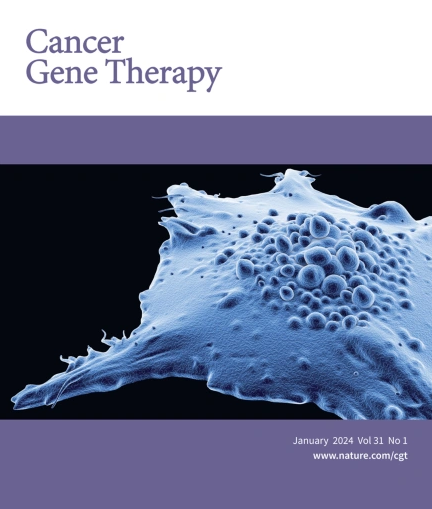黄芩素通过下调 LGR4-EGFR 通路抑制脑胶质瘤细胞增殖并诱导其凋亡。
IF 4.8
3区 医学
Q1 BIOTECHNOLOGY & APPLIED MICROBIOLOGY
引用次数: 0
摘要
确诊为脑胶质瘤的患者预后较差,治疗方案有限。LGR4 在脑胶质瘤中过度表达,参与了许多肿瘤的发生。黄芩素(BAI)是一种黄酮类化合物,在多种肿瘤中具有抗肿瘤作用。然而,BAI和LGR4在脑胶质瘤中的功能和关联仍不清楚。本研究利用基因表达谱交互分析和人类蛋白质图谱数据库,对脑胶质瘤患者中的LGR4进行了表达和生存分析。随后,通过 RNA 干扰和皮下移植,探讨了 LGR4-EGFR 在脑胶质瘤细胞(HS683 和 KNS89)和脑胶质瘤动物模型中的意义。此外,还用 BAI 处理脑胶质瘤细胞,探讨 BAI 在脑胶质瘤中的作用和机制。结果显示,LGR4在脑胶质瘤中高表达,且与预后不良有关。LGR4 基因敲除抑制了脑胶质瘤细胞的增殖和表皮生长因子受体磷酸化,但诱导了细胞凋亡。然而,表皮生长因子受体过表达和 CBL 敲除可逆转这些效应。与此相反,体外和体内实验均显示,LGR4 的过表达会促进脑胶质瘤细胞的恶性行为并促进肿瘤的发展,但 BAI 和表皮生长因子受体抑制剂可挽救这些效应。此外,si-LGR4 会加速表皮生长因子受体蛋白的降解,而 oe-LGR4 则表现出相反的效果。在不影响正常细胞活力的情况下,BAI能抑制恶性行为,与LGR4相互作用,并阻断脑胶质瘤细胞的LGR4-EGFR通路。总之,我们的数据表明,BAI通过下调LGR4-EGFR通路抑制脑胶质瘤细胞增殖并诱导细胞凋亡,为治疗脑胶质瘤提供了一种新的策略和潜在的治疗靶点。本文章由计算机程序翻译,如有差异,请以英文原文为准。

Baicalein inhibits cell proliferation and induces apoptosis in brain glioma cells by downregulating the LGR4-EGFR pathway
Patients diagnosed with brain glioma have a poor prognosis and limited therapeutic options. LGR4 is overexpressed in brain glioma and involved in the tumorigenesis of many tumors. Baicalein (BAI) is a kind of flavonoid that has exhibited anti-tumor effects in various tumors. Nevertheless, the functions and associations of BAI and LGR4 in brain glioma remain unclear. In this study, Gene Expression Profiling Interactive Analysis and Human Protein Atlas databases were used to perform expression and survival analysis of LGR4 in brain glioma patients. Subsequently, the significance of LGR4-EGFR in brain glioma cells (HS683 and KNS89) and brain glioma animal models was explored by RNA interference and subcutaneous transplantation. Additionally, brain glioma cells were treated with BAI to explore the roles and mechanisms of BAI in brain glioma. The results showed that LGR4 was highly expressed in brain glioma and was related to a poor prognosis. LGR4 knockdown repressed the proliferation and EGFR phosphorylation but induced apoptosis in brain glioma cells. However, these effects were reversed by EGFR overexpression and CBL knockdown. In contrast, both in vitro and in vivo experiments revealed that LGR4 overexpression facilitated brain glioma cell malignant behavior and promoted tumor development, but these effects were rescued by BAI and an EGFR inhibitor. Furthermore, si-LGR4 accelerated EGFR protein degradation, while oe-LGR4 exhibited the opposite effect. Without affecting normal cellular viability, BAI inhibited malignant behavior, interacted with LGR4, and blocked the LGR4-EGFR pathway for brain glioma cells. In conclusion, our data suggested that BAI inhibited brain glioma cell proliferation and induced apoptosis by downregulating the LGR4-EGFR pathway, which provides a novel strategy and potential therapeutic targets to treat brain glioma.
求助全文
通过发布文献求助,成功后即可免费获取论文全文。
去求助
来源期刊

Cancer gene therapy
医学-生物工程与应用微生物
CiteScore
10.20
自引率
0.00%
发文量
150
审稿时长
4-8 weeks
期刊介绍:
Cancer Gene Therapy is the essential gene and cellular therapy resource for cancer researchers and clinicians, keeping readers up to date with the latest developments in gene and cellular therapies for cancer. The journal publishes original laboratory and clinical research papers, case reports and review articles. Publication topics include RNAi approaches, drug resistance, hematopoietic progenitor cell gene transfer, cancer stem cells, cellular therapies, homologous recombination, ribozyme technology, antisense technology, tumor immunotherapy and tumor suppressors, translational research, cancer therapy, gene delivery systems (viral and non-viral), anti-gene therapy (antisense, siRNA & ribozymes), apoptosis; mechanisms and therapies, vaccine development, immunology and immunotherapy, DNA synthesis and repair.
Cancer Gene Therapy publishes the results of laboratory investigations, preclinical studies, and clinical trials in the field of gene transfer/gene therapy and cellular therapies as applied to cancer research. Types of articles published include original research articles; case reports; brief communications; review articles in the main fields of drug resistance/sensitivity, gene therapy, cellular therapy, tumor suppressor and anti-oncogene therapy, cytokine/tumor immunotherapy, etc.; industry perspectives; and letters to the editor.
 求助内容:
求助内容: 应助结果提醒方式:
应助结果提醒方式:


